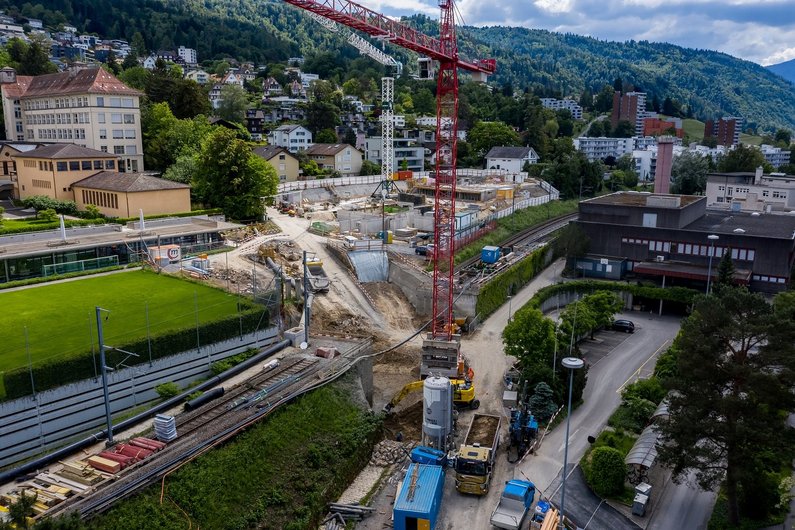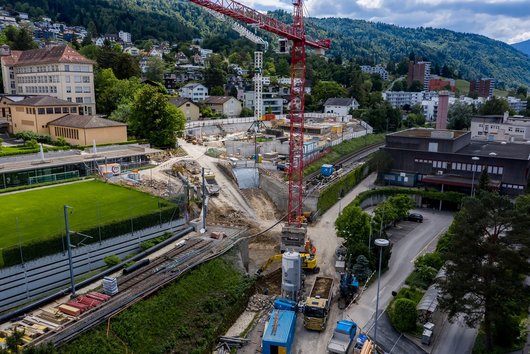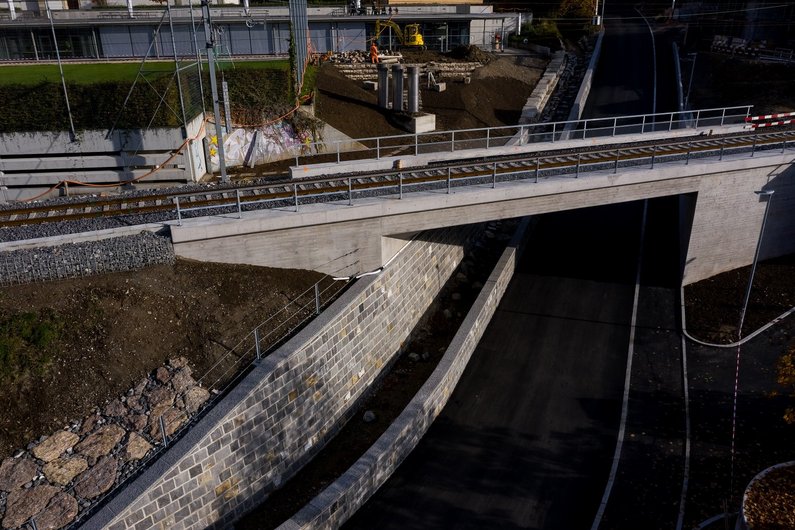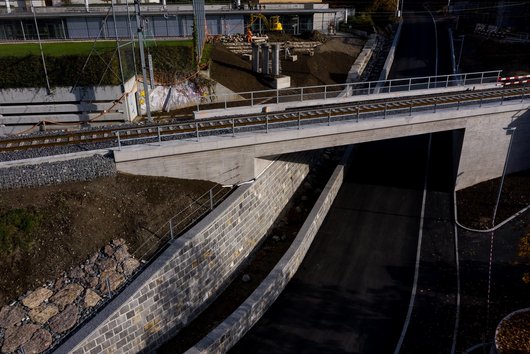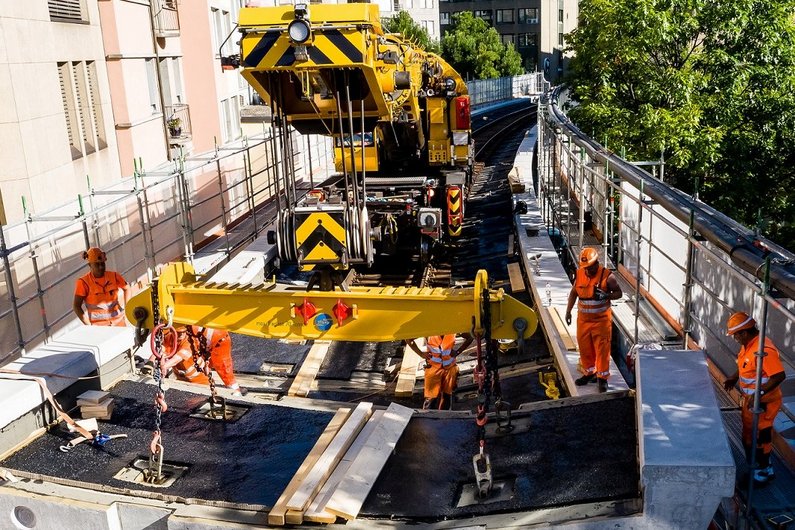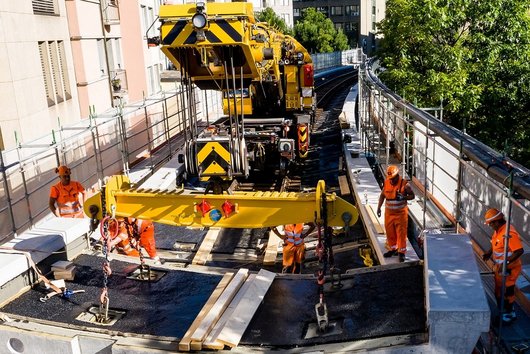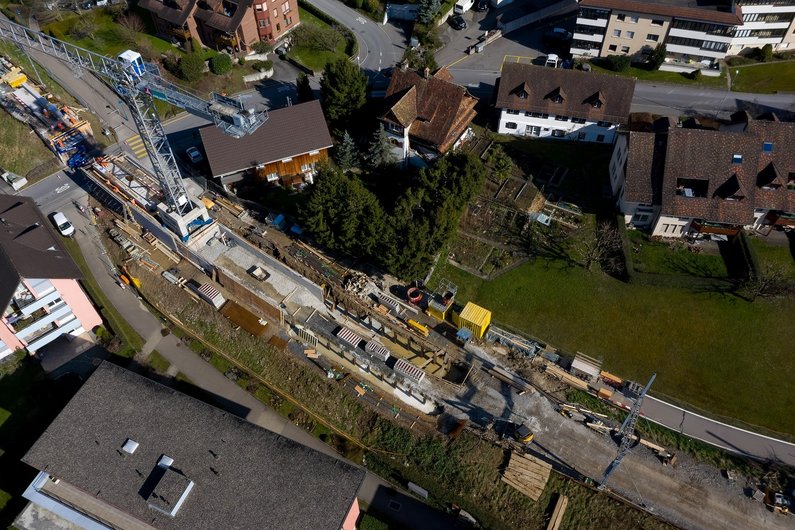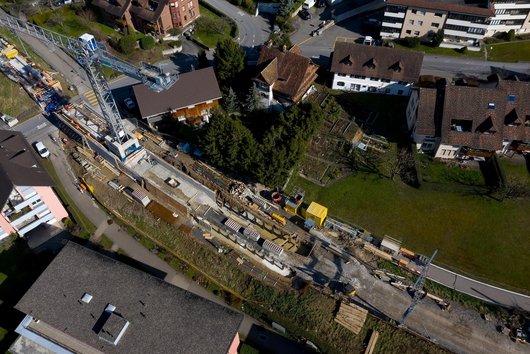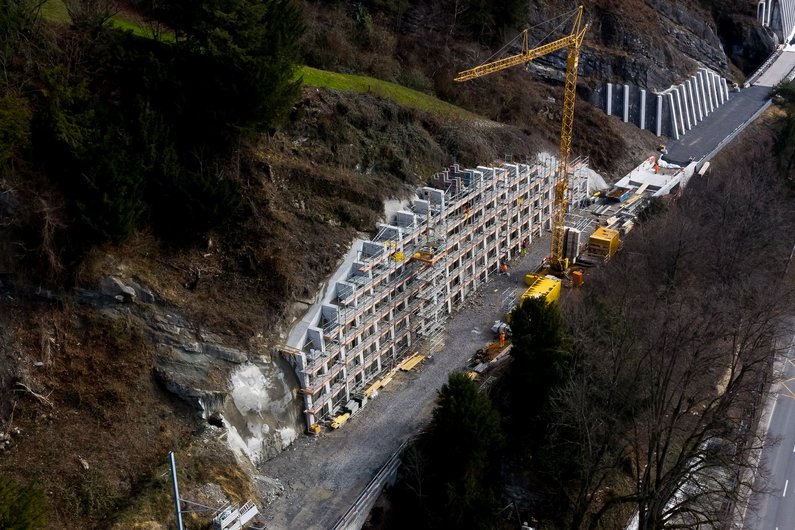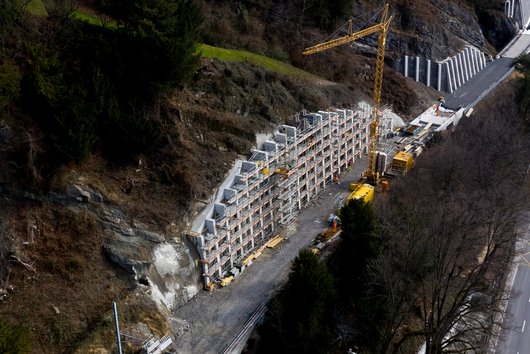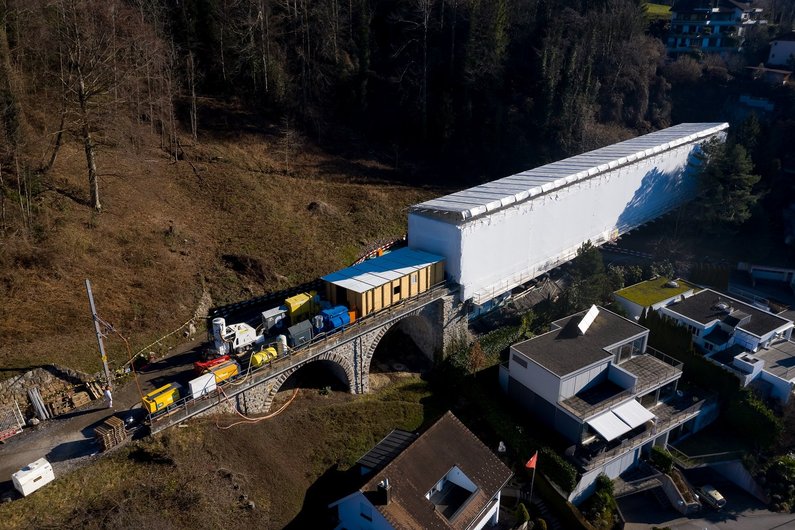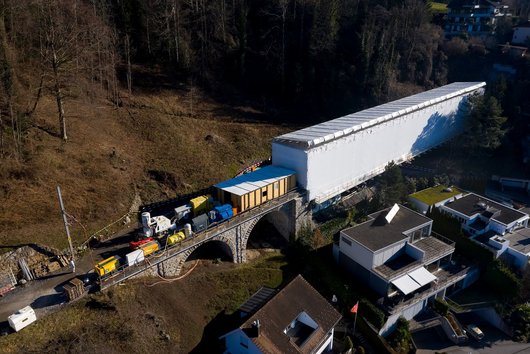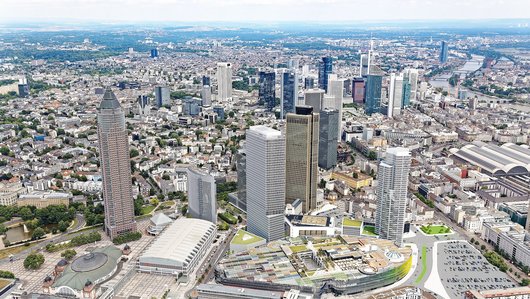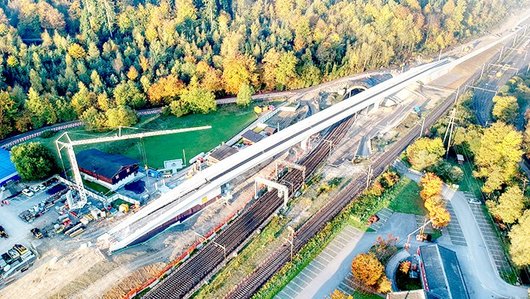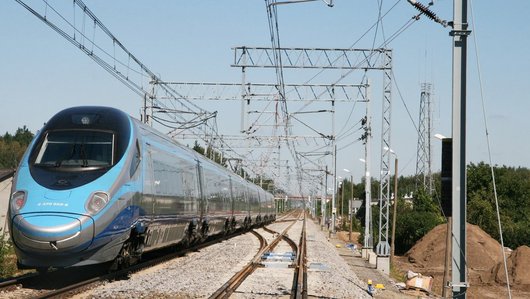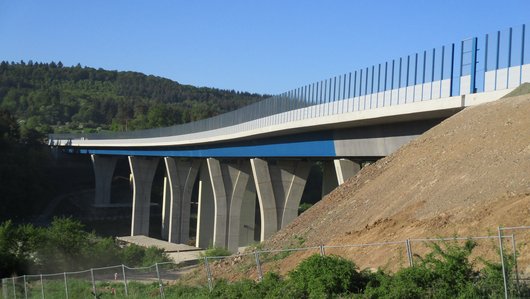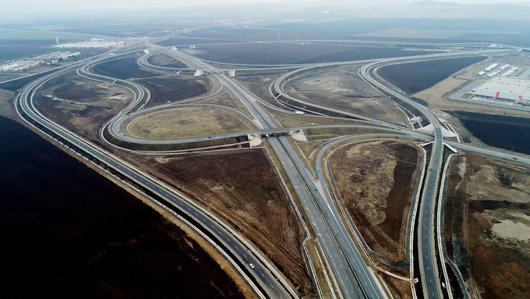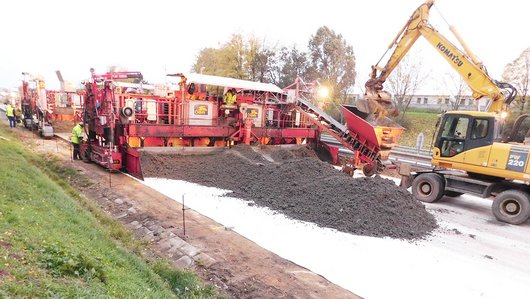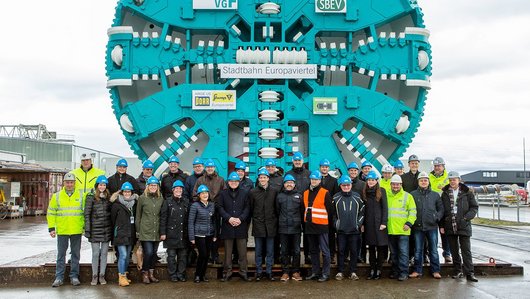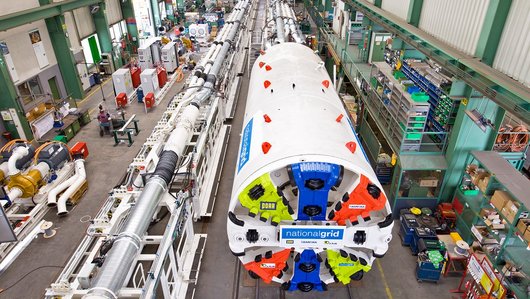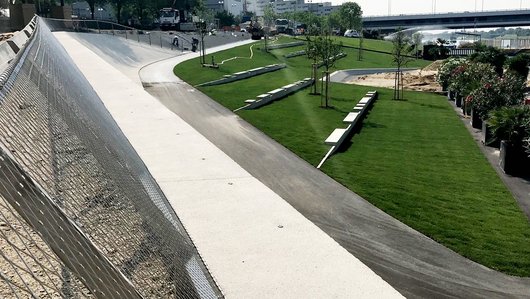
Infrastructure measures at Zugersee Ost
PORR participated in a consortium comprehensively renovating and extending a 15km stretch of railway line along the Gotthard axis – in just eighteen months.
ZUGO, a consortium comprising six companies and 230 employees, completed the project on schedule and within budget despite being faced with lockdown and a halt to construction work in 2020. The work covered around 150 different construction sites: building new bridges, widening tunnels and upgrading single track sections to double track.
-
EmployerSchweizerische Bundesbahnen SBB
-
ContractorPORR SUISSE AG in Arbeitsgemeinschaft (ZUGO)
-
ArchitectIGZO c / o Emch + Berger WSB AG
-
Order typeBaumeisterleistungen
-
Project typeInfrastructure and civil engineering, specialist civil engineering, surface construction
-
Project scopeRenovation and upgrade to of the Zug-Arth-Goldau railway line
-
Order volumeEUR 106m
-
Construction start03/2019
-
Construction end09/2020
Overview
The renovations and upgrades to the track section between Zug and Arth-Goldau represent a significant milestone in the Swiss Federal Railway’s project to optimise the north-south axis. The key element of the project was the conversion of a 1.7km section near Walchwil to double track – an upgrade which will improve scheduling stability and capacity for long-distance and regional trains alike. Extensive infrastructure maintenance measures were also carried out in the tunnels, so that in future double-decker trains will be able to travel this route. In total, the project teams – i.e. the ZUGO consortium – worked on some 150 construction sites over a 15km track section.
Background
The first feasibility study for upgrading the Zug/Arth-Goldau section to double track dates back to 2006. At that time, engineering firm Emch + Berger concluded “an economically and environmentally acceptable implementation of the extension could be ensured by completely closing down the line”. It would nonetheless take another ten years for the project to be tendered. Further delays followed the awarding of the contract in 2015, as a number of legal actions were taken in an attempt to prevent the upgrade.
The work preparation and construction site logistics were crucial to this project, since only a small number of access roads could be set up and it was almost impossible to reach the railway tracks along the Zugersee Lake.
The Federal Court finally gave the project the green light in 2018, and the SBB was able to conclude its agreement with the ZUGO consortium. Arrangements were coordinated as quickly as possible, and work on preparing the construction sites was already underway by March 2019. The work preparation and construction site logistics were crucial to this project, since only a small number of access roads could be set up and it was almost impossible to reach the railway tracks along the Zugersee Lake. In June 2019, the Oberwil-Arth track section was closed and construction work began on schedule. The construction activities were divided into two main construction phases and four sections, to facilitate smooth progress of the work.
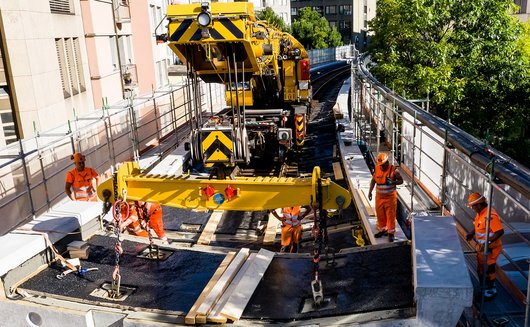

Section 1: Stream lining and bridge upgrade
The first work section was in the town of Zug: tasks included reinforcing the banks of the Mänibach Stream and constructing a new railbed on the bridge crossing the stream. To do this, the team installed concrete elements on the existing viaduct. However, an unexpected problem arose in this section: new measurements from the Stadt Tunnel indicated that the upgraded track section would not have sufficient clearance throughout the tunnel. The consortium had to ensure sufficient clearance for the new railbed throughout the tunnel, which involved considerably more work than the original plans had foreseen.
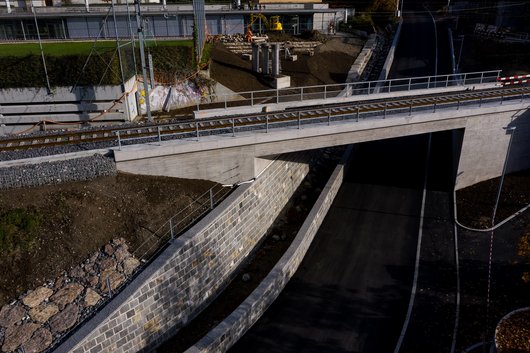

Section 2: Track construction with cofferdam
In this second section, the team constructed various bridges, supporting structures and a cofferdam. In addition, the Rüglei system was installed on the tracks throughout this section. This system, specially developed for railways, widens the shoulders with gabions and allows for optimal drainage. The consortium team was faced with particularly tricky logistics in this section. The space was so tight that it was impossible for lorries to pass one another, so material excavation and deliveries had to be planned right down to the last detail. To achieve this, security teams met every lorry and allocated them precisely. At times, lorries had to reverse through up to 1.5km of very narrow single-track tunnels.


Section 3: Upgrading to double track
The core of the project was in this section: 1.7km of the old single-track rail was upgraded to double track – including the single-track Büel Tunnel, which was no straightforward task: slopes had to be secured, supporting walls for bridges built. The 60-tonne Sabenbach Bridge was transported up 19% gradients and set in place using railway cranes.
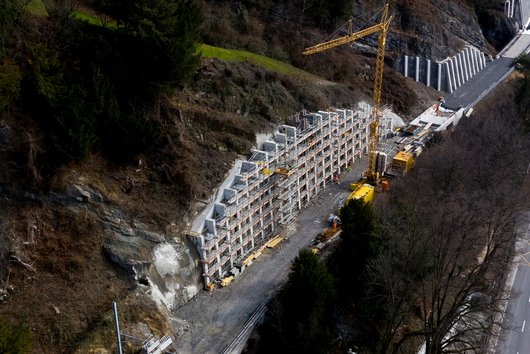

Section 4: Safety measures
The consortium’s fourth section involved installing various safety structures, including a flood embankment and some 3,000m² of safety nets. A number of single-track tunnels were also widened during this stage to make room for double-decker trains. The team added corrosion protection to two steel bridges. Finally, the railway tracks were lifted out from the entire track section and a Rüglei system was installed section by section as they were reassembled.
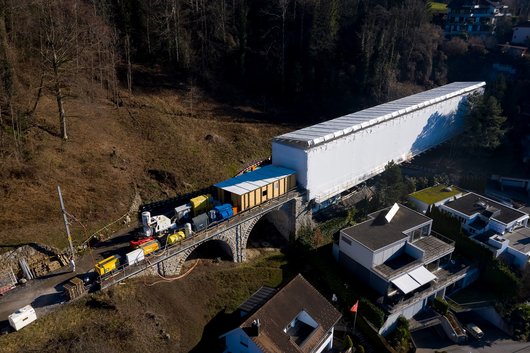

We successfully introduced a new three-shift scheme to compensate for the delays caused by lockdown.
Summary
The comprehensive infrastructure measures along the Zug-Arth stretch of railway were a challenge for more reasons than one: as well as the sophisticated construction technology and intricate site logistics, the project schedule and budget were put under huge pressure by the Covid-19 pandemic and April 2020 lockdown – which included halting all construction activity. New, creative ideas were required and the ZUGO consortium quickly stepped up, presenting a new three-shift scheme. Thanks to this scheme, which was approved by the client, the consortium succeeded in meeting every one of their deadlines that was subject to a contractual penalty.
Techhnical data
-
Tunnel excavation45,000 m³
-
In-situ concrete1,400 m³
-
Reinforced concrete1,000 t
-
Steel for bridges60 t
-
Directly bored piles10,500 m
-
Micropiles1500 m
-
Soil nail walls4,000 m²
-
Corrosion protection6,600 m²
-
Protective netting3,000 m²

